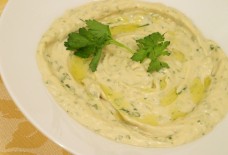Spotlight on Yazan Halwani: Beirut's Street Artist
“To Beirut,
From my heart, I send peace to Beirut,
And kisses to the sea and homes,
To the Rock that is as the face of an old sailor.
She comes from the soul of the people, from wine,
She comes from their sweat, from jasmine.
Then how did her taste change to smoke and fire?”
So reads the translated lyrics of Fairuz’s most famous song, “Li Beirut” (To Beirut). Today, the song is often cited as a symbol of Lebanon’s history, full of sadness and suffering. But Fairuz also sings of Beirut and its people as being one -“You are mine, you are mine. Ah, hug me”- both in suffering and in hope.
In that spirit, Yazan Halwani is taking back the streets to make them more ‘Beiruti’. His weapon? Art. Global Voices Online sat down with this young Lebanese graffiti artist to see what makes him tick.
Global Voices: Can you please introduce yourself?
My name is Yazan Halwani and I am a street artist and calligrapher from Beirut, Lebanon. I have been street painting for around seven years now, mainly in Beirut, the city that inspired it all, but also in Tunisia, Singapore, Dubai, France.
GV: Can you describe your work?
My current work is a style I have developed myself over the past years. It combines Arabic calligraphy, oriental geometry and patterning and portraiture. I think that my work is also not only about mural painting but more about the relation of the wall to the people and the city it surrounds. For example the Feyrouz mural has become somewhat of a landmark for the people living around it. The owner of the several buildings around it called it:”The most photographed wall in the city”. One time when someone scribbled on the Fairuz mural, someone living next to the mural called me, without knowing who he is, and asked me if I could fix the mural.
GV: What inspired you to do what you do?
I have developed over the years. I have started my work as a graffiti artist being inspired by the graffiti scene in Europe and the US, where graffiti artists write their name in flashy and colorful ways. After a few years of doing that, I started questioning the relationship the relation of my work within a city in the Middle-East: at the time, it was somewhat alien from its surroundings, I realized that writing my name was not really different than what political parties have been doing around the city. I needed to change direction.
One day, I stumbled across a book of the five main calligraphy scripts (Diwani, Koufi, Thuluth, Naqsh, etc.) and decided to change my style: instead of doing my “alias”, I would paint words, letters, images that fit much better within the city, the culture and the context. At this stage I thought that a good mural is one that talks to the citizens surrounding it: it becomes part of the city and it becomes theirs, not the artist’s.
This is why each mural tries to have a story that relates to the people living around it: Ali Abdallah‘s mural is a reminder of a homeless man who died from the cold and it tries to make people help or remember their social responsibilities.
Indeed, Yazan doesn’t just paint famous people. The story of Ali Abdallah is a particularly striking one. In Yazan’s words:
Some people told me that I “paint famous people”, this is not true. I paint faces that tell stories, and are part of our culture. One of my favorite murals is the one of “Ali Abdallah”, a homeless man living on Bliss street.
Ali’s existence was surrounded by urban legends about how he became homeless. Some of them say he was a physics teacher that had a scaring experience during the Civil War. The one thing everyone agreed on was their love for Ali.
Despite that, on one of the coldest winter nights, Ali passed away. This tragedy triggered several short-lived initiatives to try to help the homeless in Beirut. After a few months everybody seemed to have forgotten about Ali’s story. This is why I painted the mural to remind people of his friendly face, and also to remind people on an everyday basis of these short-lived initiatives.



